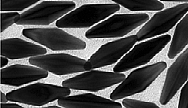All About Gold Nanobipyramids
Definition, Properties and Applications
Gold nanobipyramids are a type of gold nanoparticles that have garnered significant attention due to their unique physical and optical properties, as well as their ease of chemical functionalization (Chen et al., 2008). These nanoparticles exhibit shape- and size-dependent refractive index sensitivity, making them suitable for various applications such as sensing, biomedicine, environmental protection, chemical catalysis, and optics (Chen et al., 2008; Xue et al., 2023). The distinct morphology of gold nanobipyramids, with two sharp apexes, contributes to their remarkable photothermal effect, making them highly effective for photothermal therapy in the treatment of conditions such as liver cancer (Liu et al., 2023; Wu et al., 2019). Additionally, their localized surface plasmon resonance effect is stronger compared to other gold nanostructures, enhancing their potential for various applications (Liu et al., 2023; Wu et al., 2019).
Furthermore, gold nanobipyramids have been utilized in the development of electrochemical sensors, demonstrating their versatility and applicability in sensitive detection methods (Xue et al., 2023). The unique properties of these nanoparticles have also been leveraged in the field of theranostic nanomedicine, where they have been incorporated into multifunctional nanoplatforms for simultaneous multilayer imaging of tumor biomarkers and photothermal therapy (Wang et al., 2020). Moreover, their potential for enhancing light absorption and improving the efficiency of perovskite solar cells has been investigated, highlighting their relevance in renewable energy technologies (Luo et al., 2022).
The synthesis and characterization of gold nanobipyramids have been the focus of extensive research, with studies exploring rapid synthesis methods and the optimization of their plasmonic performances for various applications (Lv et al., 2020; Ni et al., 2022). Additionally, the use of gold nanobipyramids in temperature-derived purification and colorimetric detection further underscores their significance in analytical and diagnostic applications (Xu et al., 2017; Xue et al., 2023).
However, it is essential to consider the potential toxicity of these nanoparticles, as their interactions with biological systems, as demonstrated in a study using a zebrafish model, can lead to adverse effects (d’Amora et al., 2021). Understanding the toxicological profile of gold nanobipyramids is crucial for their safe and effective utilization in biomedical and environmental applications.
In conclusion, gold nanobipyramids exhibit a wide range of properties and applications, from photothermal therapy and sensing to catalysis and renewable energy technologies. Their unique physical and optical characteristics make them valuable for various scientific and technological advancements, although careful consideration of their potential toxicity is necessary for their safe implementation.
Go here for Nanopartz Gold Nanobipyramids
References:
Chen, H., Kou, X., Liu, Y., Ni, W., & Wang, J. (2008). Shape- and size-dependent refractive index sensitivity of gold nanoparticles. Langmuir, 24(10), 5233-5237. https://doi.org/10.1021/la800305j
Liu, X., Zhou, W., Wang, T., Miao, S., Lan, S., Wei, Z., … & Fan, H. (2023). Highly localized, efficient, and rapid photothermal therapy using gold nanobipyramids for liver cancer cells triggered by femtosecond laser. Scientific Reports, 13(1). https://doi.org/10.1038/s41598-023-30526-x
Luo, W., Chen, L., Fang, B., Sun, J., & Zhan, W. (2022). Study on light absorption enhancement of perovskite solar cells by gold nanobipyramids.. https://doi.org/10.1117/12.2626586
Lv, J., Sun, X., Zhan, Q., He, S., & Forsberg, E. (2020). Rapid synthesizing of gold nanobipyramids. Materials Research Express, 7(2), 025029. https://doi.org/10.1088/2053-1591/ab726b
Ni, Y., Kan, C., & Xu, J. (2022). Optimized plasmonic performances and derivate applications of au nanobipyramids. Physical Chemistry Chemical Physics, 24(36), 21522-21537. https://doi.org/10.1039/d2cp02811e
Wang, J., Gao, Y., Li, P., Xu, S., & Liu, X. (2020). Core–shell multifunctional nanomaterial-based all-in-one nanoplatform for simultaneous multilayer imaging of dual types of tumor biomarkers and photothermal therapy. Analytical Chemistry, 92(22), 15169-15178. https://doi.org/10.1021/acs.analchem.0c03669
Wu, X., Mu, L., Chen, M., Wang, Y., She, G., & Shi, W. (2019). Bifunctional gold nanobipyramids for photothermal therapy and temperature monitoring. Acs Applied Bio Materials, 2(6), 2668-2675. https://doi.org/10.1021/acsabm.9b00344
Xu, S., Ouyang, W., Xie, P., Lin, Y., Qiu, B., Lin, Z., … & Guo, L. (2017). Highly uniform gold nanobipyramids for ultrasensitive colorimetric detection of influenza virus. Analytical Chemistry, 89(3), 1617-1623. https://doi.org/10.1021/acs.analchem.6b03711
Xue, M., Wang, W., Li, Q., Wu, M., Bu, L., & Chen, Z. (2023). A novel electrochemical sensor based on gold nanobipyramids and poly-l-cysteine for the sensitive determination of trilobatin. The Analyst, 148(10), 2335-2342. https://doi.org/10.1039/d3an00368j
Xue, Y., Ma, X., Xue, F., Roberts, S., Zhu, G., Huang, Y., … & Chen, X. (2023). Temperature-derived purification of gold nano-bipyramids for colorimetric detection of tannic acid. Acs Applied Nano Materials, 6(13), 11572-11580. https://doi.org/10.1021/acsanm.3c01593
d’Amora, M., Raffa, V., Angelis, F., & Tantussi, F. (2021). Toxicological profile of plasmonic nanoparticles in zebrafish model. International Journal of Molecular Sciences, 22(12), 6372. https://doi.org/10.3390/ijms22126372

